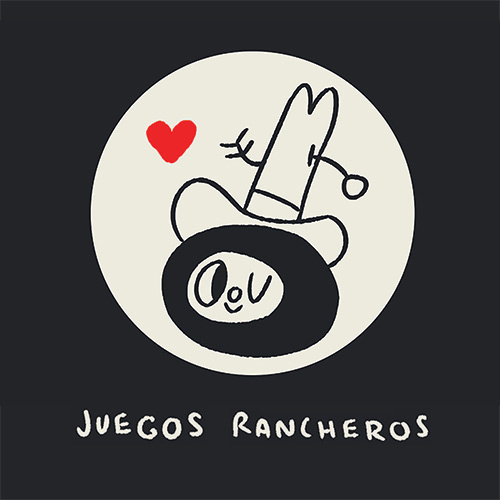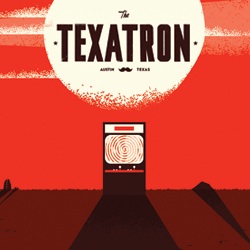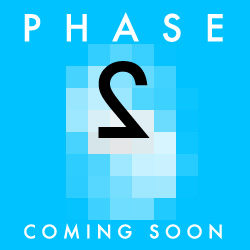SHRUNKEN SPORE: MAXIS UNVEILS 2D CREATURE CREATOR
Created as a promotion for their upcoming Wii/DS Spore Hero/Arena line, Maxis has unveiled a 2D Flash version of the franchise’s Creature Creator, and, while it’s still a bit rough around the edges (I’m having trouble properly rotating and resizing each of its constituent parts), it’s surprising for how close it comes to recreating the original experience (even moreso than the first Spore Creatures DS release).
Currently your creatures can be ‘trained’ in a simple object-whacking minigame, but even more impressive is the ability to save and load your creations via PNG files, as with the PC original, and all creations are stores in its own Sporepedia.
Let us know if you manage to whip up anything amazing.
- Data-mashers at the ready: Maxis opens the Spore API
- Wide open universe: Spore patch lets you export creatures to Maya …
- EA details Spore's 2009 PC, Wii, DS expansions
- Sporesculptor opens for 3D printed Spore creatures
- SporeBrowser: the third party, API-driven iPhone Spore-pedia …
- Fragile things: Aaron Meyers' API-driven Spore skeletons
- Skeletons alive: Aaron Meyers' Spore creatures now in augmented …
See more posts about: Offworld Originals
ONE SHOT: OUR CHILDHOODS, WELL SPENT
Comic artist Nick Derington captures the spirit of our collective youth for Robert Ashley’s essential podcast, which we all know was time well spent.
See more posts about: Offworld Originals, One Shot
ANGRY DAD, THE GAME: TAITO’S ARCADE TABLE-FLIPPER CHO CHABUDAI GAESHI
Is it too much to expect to just come home to a little god-damn peace and quiet after an exhausting day at work? Taito’s Cho Chabudai Gaeshi makes a game of the impotent seething rage of a frustrated father, letting you “up-end the tea table” (as Miyamoto himself famously figuratively does) for high score. [via Taito]
See more posts about: Arcade, Offworld Originals
HIS FREEMAN’S VOICE: HALF-LIFE 2, THE BEAT-BOX VERSION
Meet the latest mod making the massive rounds over the past day: Trase’s MyVoiceSounds patch, which does exactly what you expect it to, and almost, almost manages to top the Randy Savage Left 4 Dead mod for best sound-hack of all time. [via RPS, via Steve Gaynor]
See more posts about: Offworld Originals
ONE SHOT: KONJAK COMPLETES MARIO’S QUEST
Legend of Princess and Noitu Love 2 developer Joakim ‘Konjak’ Sandberg does fan-service to Nintendo lovers everywhere.
See more posts about: Offworld Originals, One Shot
RARE TREAT: THE FIRST VIDEO FOOTAGE OF TEAM MEAT’S WIIWARE SUPER MEAT BOY
The first trailer for Team Meat’s upcoming Super Meat Boy also serves to announce two previously unknown features: a ‘retro world’ warp zone that lets you play as 8-bit Meat Boy, “by old school rules”, says designer Edmund McMillen, and, even more fantastically, a replay system that lets you see every previous attempt you’d made on each level, all at once.
- The endless forest: first WiiWare shot of Edmund McMillen's Super …
- Meat high: WiiWare's Super Meat Boy getting Bit.Trip crossover …
- Braid star Tim making cameo in WiiWare's Super Meat Boy
- Get physical with new Super Meat Boy cinematic trailer, papercraft …
- One shot: Commander Video, Meat Boy style
- Savory new details of Edmund McMillen's Meat Boy
See more posts about: Offworld Originals
SOMEDAY, SOMEWHERE: THE FIRST LOOK AT INFINITE AMMO’S MOVING MARIAN IN MOTION
Aquaria co-creator and Paper Moon designer Alec Holowka used his delightfully thought-provoking Indie Games Summit session on the interplay of story, character and player to also reveal the first footage of Marian, his upcoming 2D opus under wraps since it was first teased at the beginning of the year.
Holowka adds that he plans to create Marian out of pocket, but you can support its ongoing development by donating $10 to the cause via the Infinite Ammo blog.
See more posts about: Infinite Ammo, Offworld Originals
ONE SHOT: CHARLIE BROOKER’S IN GAMES
Our UK readers and a select few otherwise will know Charlie Brooker from his Screenwipe TV series (and even more should know him for his hipster-eviscerating Nathan Barley and his excellent Big Brother/zombie apocalypse mashup mini-series Dead Set), but he’s someone you’ll probably be hearing much more about soon as he announces that his new series Gameswipe has officially been completed.
See more posts about: Offworld Originals, One Shot
Q?’PID’S ARROW: LUMINES, METEOS DEVS CREATING IPHONE LOVE-PUZZLE
Edge mag recently ran a report from Rez, Lumines and Meteos developer Q? Entertainment’s press conference, which in general showed the art-house developer keeping up with changing times as best it can, primarily with partnerships for free-to-play microtransaction-based MMORPG games like the PS3’s Angel Love Online.
The developer hasn’t totally given up on its roots, with an iPhone port of Lumines due in the near future, and a video message from Rez designer Tetsuya Mizuguchi promising that work is continuing with Ubisoft on the still un-detailed (and possibly Rez related) ‘Project Eden’, but the biggest and most unexpected surprise of the conference was Q?’Pid Finger Puzzle.
Described as a “brand new type of ‘Touch Communication’ application”, Q?’s iPhone app sees two players using the device’s multi-touch capabilities to trace lines on the screen to ‘un-fuzzify’ “titilating photos”, with an undercurrent of compatibility/love-testing between the pair made clear with an end-level Diagnosis that “gives you all the information you need to take it to the next level. Q’pid’s got your back!”
Arch one eyebrow at more screens and info via Q?’s official Q?’pid site.
See more posts about: Offworld Originals
AUSTIN INDIE SUMMIT: THE SUCCESSFUL CONSTRUCTION OF FANTASTIC CONTRAPTION
Watching Fantastic Contraption creator Colin Northway speak, you get the sense that he’s discovered the magic formula, and despite the confidence that his undeniable success allows (he’s converted, he figures, about 0.5% of the 3.1 million players he’d gained by the end of October 2008 into $10 paying customers [basically: cut those millions in half, move the decimal point one to the left, and put a dollar sign in front]), you get the sense that that success came as a surprise to him as much as anyone.
In what was easily the most entertaining session of the first day of GDC Austin’s Indie Games Summit, Northway guided his audience through the rise and rise of the construction-puzzle game’s development and near-instant user-crush in the form of a literally-bug-squashing timeline platformer, with his own mutton-chopped mug perfectly pixelated by I Wish I Were The Moon/Today I Die‘s Daniel Benmergui, and offered a number of guidelines for other developers hoping to mirror his accolades.
1.) Make your game in Flash
Northway draws a fine distinction between ‘Flash games’ (games where you “launch kitties into a spiky thing”) and ‘games written in Flash’, but he’s an evangelist for the platform more than anything because “the content discovery problem has been solved” compared to consoles, the iPhone, etc. Forums, emails, all pre-existing internet communities will do the work of keeping your game’s name in front of other people, whereas, say, with the iPhone, “making money is hard to do if Apple doesn’t spray the money hose on you.”
2.) Make your game “live online”
All of those user good graces will be short lived, though, if your game doesn’t make it easy for them to spread. Northway repeatedly conjured the idea of letting your game “live on the internet”, something he’s done by keeping user-made creations in a database accessible by a friendly URL, rather than 10-line encoded data URLs, that can be passed easily from player to player in emails and forum posts. But also, he notes, you get “no grace from people on Flash, versus a downloaded game” — because they have no time invested in your game other than loading it in their browser, you need to “spoon feed them for the first five minutes” to ensure they don’t leave as soon as they’ve arrived. “Take people who hate you and put them in front of your game,” he said, “and write [those first five minutes] specifically to them.”
3.) Leverage “pride based marketing”
Here’s where Northway’s advice gets more genre specific, or perhaps where it can urge designers to expand their designs to capitalize on what he’s found: because Contraption lets users pass their intricately built puzzle solutions to each other, and because he’s made that easier with his advice above, his players are “really keen on sharing something they’ve built”. Using this “pride based marketing” to your advantage will “pay off so well for you in the way your game spreads.”
4.) Make a free game that gives players ‘a tote bag’ if they pay
While Contraption asks for money as soon as you hit its home screen, the game’s spread more easily because it’s always been reviewed as a free game, with some 10 hours of play given away. What Northway does is give players a thing when they buy it — in this case, access to level editors and its library of 40,000 user-made levels for that $10 fee (likening it to a PBS model of watching 9 hours of Red Dwarf, but getting spurred on to pay for that content by getting a tote bag). And while he has only converted that 0.5%, that’s not far off from piracy numbers he’s heard quoted elsewhere. Surprisingly, only five percent of the people who’ve paid have gone on to actually use the level editor, even once.
Northway saw his game go from release (with zero spent or expended in the way of PR or press outreach) to 20,000 users in his first weekend (spent lazing around on the couch) to 1.1 million in its first month (spent still working at his ‘real’ job, watching the first PayPal emails dinging in and saying “some human being thinks you’re worth $10”) to that 3.1 million before publisher inXile (also currently operating similarly viral web-diversion Line Rider) assumed control of the operation.
There seem to be other factors he doesn’t mention that have aided in its success (taking something as daunting as physics-heavy construction kits and making it friendly with its flat, bubbly thick-vector interface), but, as was echoed by a number of indie devs following the session, Northway’s model and story seems to be precisely the way that indie development should, as in, is meant to work.
See more posts about: Offworld Originals






